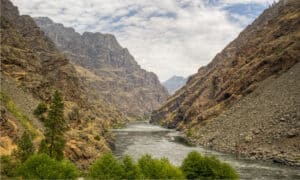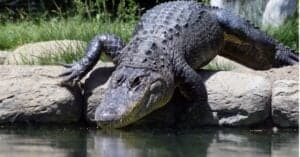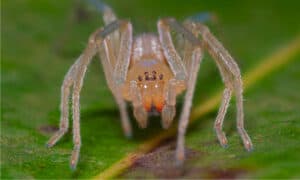Amphibians vs Reptiles: 10 Key Differences Explained
Think back to your elementary school days and your first science classes. Do you remember learning about the differences between amphibians vs reptiles? If so, do you remember what separates these two classes of animals? You likely remember that they are both cold-blooded vertebrates. Maybe you remember that most reptile and amphibian species lay eggs rather than give birth to live young. Extra points if you recollect that they tend to shed their skin all at once through a processing called molting or sloughing. However, do you remember all the critical differences that separate amphibians vs reptiles?
If not, don’t worry, we’ve got you covered. In this article, we’ll discuss ten key differences that separate amphibians and reptiles. As a bonus, we’ll also cover several frequently asked questions about the two. By the end of this article, you’ll feel like a kid again and be able to impress all your friends with your scientific knowledge. That said, here are the ten key differences between amphibians vs reptiles.
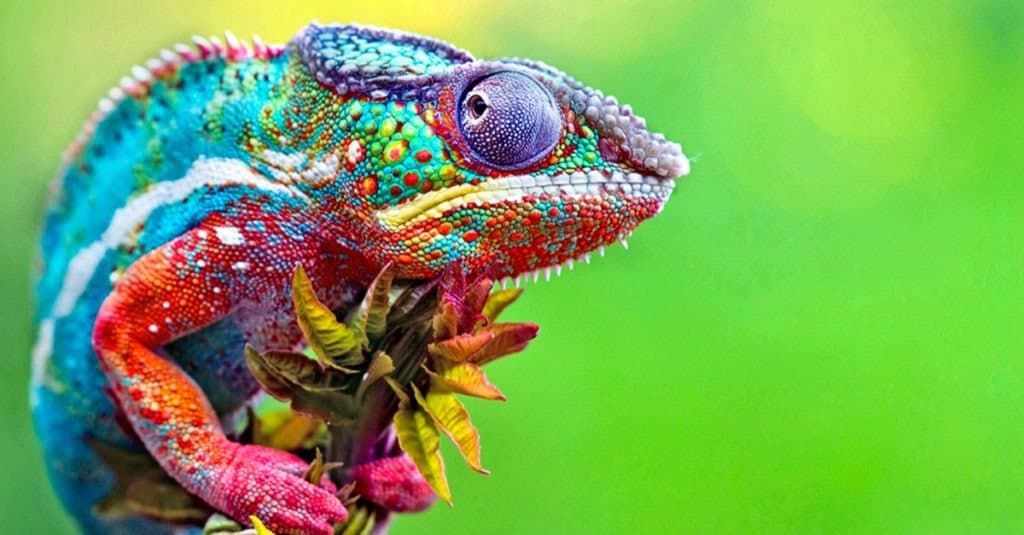
Graphics Illuminate/Shutterstock.com
Comparing Amphibians and Reptiles
| Amphibians | Reptiles | |
| Taxonomy | Clade: Batrachomorpha Class: Amphibia |
Clade: Sauropsida Class: Reptilia |
| Habitat | Live life in and outside of water | Tend to live on land but may spend time in the water |
| Skin | Permeable skin Warts common Mucous glands keep skin moist May excrete poisonous compounds from glands |
Hard, watertight epidermis Covered in dermal or epidermal scales or shells Do not excrete mucus through the skin |
| Nervous System | Less-developed brain Smaller cerebrum and cerebellum 10 pairs of cranial nerves |
More-developed brains Larger cerebrum and cerebellum 12 pairs of cranial nerves |
| Respiration | Most can exchange gas through the water or air via their skin Gills on larvae and some adults |
Cannot respire through the skin Pulmonary respiration is the most common form of exchanging gas |
| Excretions | Nitrogenous waste excreted as ammonia | Most waste is excreted as uric acid |
| Tongue | Whole tongue Usually sticky |
Bifurcated tongue Sensory organ |
| Eyes | Limited color vision Adapted to see in the water and on land |
More advanced eyes that can see in a broader range of colors |
| Eggs | Gelatinous eggs containing mucus Laid in water Fertilized externally or internally |
Amniotic eggs covered by leathery or calcareous shells Laid on land Fertilized internally |
| Larva | The life cycle usually begins with an aquatic larval form Undergo metamorphosis to reach the adult stage |
No aquatic larval form No transition to reach the adult stage |
The 10 Key Differences Between Amphibians and Reptiles
Amphibians and Reptiles: Taxonomy
Despite their many similarities, amphibians and reptiles belong to different classes in the animal kingdom. Amphibians belong to the clade Batrachomorpha, which comprises all recent and extinct amphibians that share more in common with modern amphibians than with reptiles. They belong to the class Amphibia, which includes animals such as frogs, toads, salamanders, and caecilians. Meanwhile, reptiles belong to the clade Sauropsida, which consists of all amniotes that share more in common with modern reptiles than mammals. They fall under the class Reptilia, which contains animals like snakes, lizards, turtles, and crocodiles.
Amphibians and Reptiles: Habitat
While amphibians and reptiles range throughout the world and live in similar environments, they spend most of their time in different habitats. For example, most amphibians have an aquatic stage of their life cycle. Many will spend a majority of their time in or near water, while some species spend their entire lives within the water. One example is the olm, a species of salamander that lives in caves. Olms rarely leave the water and may spend years underwater without ever breaching the surface. On the other hand, most reptiles spend the majority of their lives on land. Most do not have an aquatic stage of their life cycle, and although some will spend time in the water, few live out their lives in or near water. For example, while crocodiles spend a large portion of their time in the water, they still nest and rest on land.
Amphibians and Reptiles: Skin
When comparing the skin of amphibians vs reptiles, several differences become immediately apparent. Amphibians grow permeable skin, which allows them to breathe both air and in the water. Many species grow warts on their skin that operate for different functions. Mucous glands generate mucus, which help to moisten an amphibian’s skin and keep it from drying out. Meanwhile, granular glands often produce a noxious, poisonous compound. This substance is usually extremely bad-tasting and sometimes toxic, which helps protect the animal from predators. Meanwhile, reptiles grow a hard, watertight epidermis. Some reptiles, like turtles, grow dermal scales, while others, such as snakes, grow epidermal scales. Unlike amphibians, reptiles cannot secrete mucus through their skin, but many can still generate and deliver toxins through their fangs.
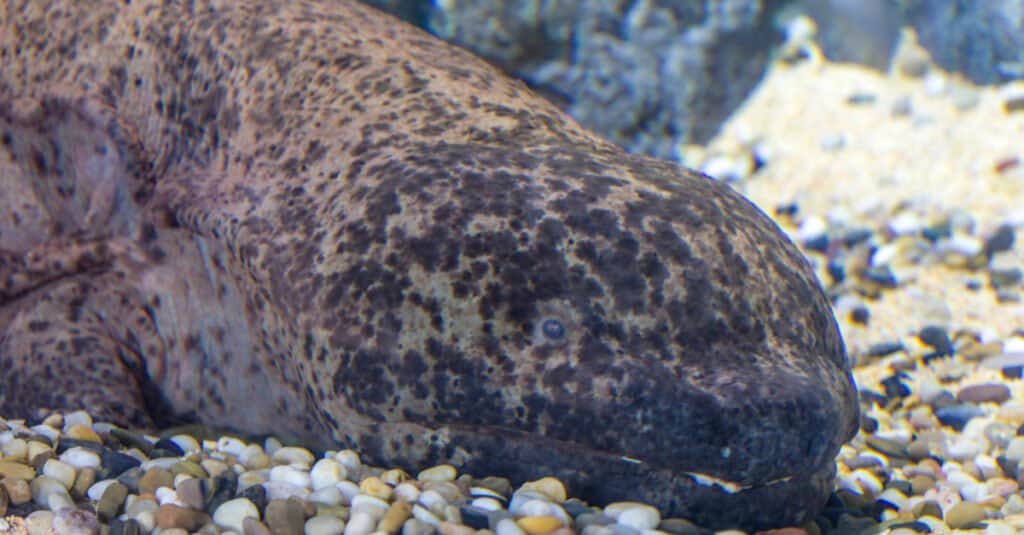
Danny Ye/Shutterstock.com
Amphibians and Reptiles: Nervous System
Although they function similarly, there exists a difference in the complexity of the nervous systems in amphibians vs reptiles. On average, the brains and nervous systems of amphibians are less well-developed than those found in reptiles. They tend to grow a smaller cerebrum and cerebellum, which affect things like motor function, thought, and speech. In addition, all amphibians only possess 10 pairs of cranial nerves. These nerves relay information from the brain to different parts of the body, including sensory information like visual images, smells, and sounds. Compared to amphibians, the brains of reptiles appear much more complex. They grow a larger, more well-developed cerebrum and cerebellum. Furthermore, like other higher vertebrates such as mammals and birds, they possess 12 cranial nerves.
Amphibians and Reptiles: Respiration
The respiratory systems of amphibians and reptiles can vary dramatically. Compared to other amniotes, the lungs of amphibians are more primitive. To inflate their lungs, amphibians must utilize buccal pumping, which involves the animal moving the floor of its mouth to circulate oxygen throughout the body. In addition, most amphibians can also exchange gas through their skin, either in the air or in the water. On the other hand, reptiles cannot respire through their skin. All reptiles breathe using their lungs, although some reptiles such as turtles evolved more permeable skin that allows for limited gas exchange through their cloaca. That said, most reptiles rely on their diaphragm or supporting muscular system to ventilate their lungs.
Amphibians and Reptiles: Excretions
As a wise man once said, everyone poops and amphibians and reptiles are no different. However, there is a distinction between the composition of the secretions emitted by amphibians vs reptiles. Namely, the primary byproduct in the waste of amphibians is ammonia. Since most amphibians aren’t concerned with conserving water, their bodies process large amounts of the substance and excrete the waste through their diluted urine. Meanwhile, as reptiles spend most of their time on land, they must conserve as much water as possible. As a result, the primary byproduct in their nitrogenous waste is uric acid. This is likely due to the fact that reptiles, along with birds and mammals, need to lay terrestrial eggs.
Amphibians and Reptiles: Tongue
Another common difference between amphibians vs reptiles is the shape of their tongue. Most amphibians grow a whole tongue, which is usually sticky to help them pick up prey. This contrasts with the tongues of many reptiles, which often appear bifurcated. Their split tongue operates as a sensory organ that allows the animal to smell and detect prey. Bifurcated tongues exist commonly in many species of snakes and lizards. That said, some reptiles also rely on whole, sticky tongues to catch prey. According to research, chameleons secrete a sticky, viscous mucus on their tongues which is 400 times thicker than human saliva. This sticky substance allows them to catch prey in a similar manner to how a frog uses its tongue to catch insects.
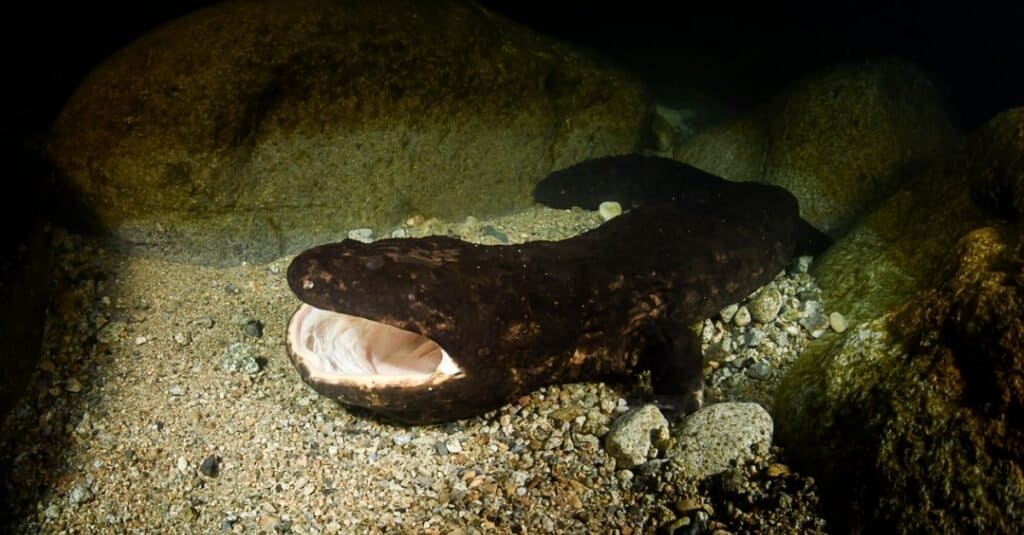
Amphibians and Reptiles: Eyes
The eyes of amphibians and reptiles evolved for specific reasons, which explains why they operate differently. Amphibians evolved to live both on land and in the water. As a result, their eyes can function equally well above and below water. That said, their eyes can only visualize a limited range of colors. However, evidence suggests that they can see certain hues in low light, whereas most eyes would only see black, white, or gray. Meanwhile, the eyes of most reptiles tend to be more well-developed. Since they only adapted to live on land, their eyes can view a broader range of colors, although they operate less well in water. In general, nocturnal reptiles evolve vertical pupils, while diurnal reptiles tend to sport round pupils.
Amphibians and Reptiles: Eggs
While most amphibians and reptiles lay eggs, their eggs are wildly different from one another. Amphibian eggs appear gelatinous and contain various mucous compounds. The outer layer is permeable to water and gas and can absorb large amounts of water. To fertilize their eggs, amphibians may rely on internal or external fertilization. Once the eggs are fertilized, amphibians typically lay their eggs in water. On the other hand, reptiles lay amniotic eggs covered by a leathery or calcareous shell. Unlike amphibians, all reptile eggs require internal fertilization. However, some amphibians and reptiles give birth to live young, such as fire salamanders and garter snakes.
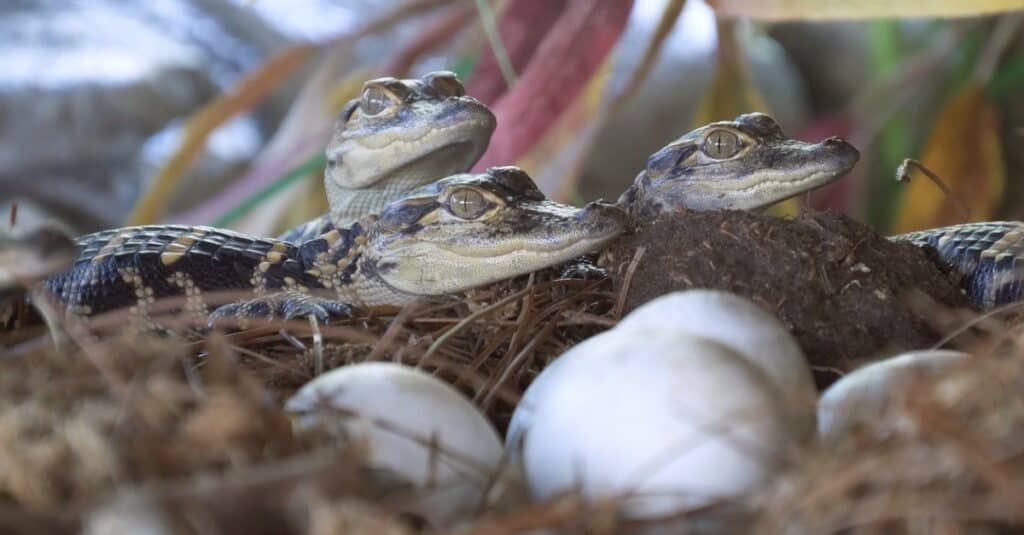
DimaSid/Shutterstock.com
Amphibians and Reptiles: Larva
The last difference that we’ll discuss today concerns the larval stage of amphibians vs reptiles. The life cycle of most amphibians usually begins with an aquatic larval stage. During this stage, young animals develop the systems and features they’ll need to survive as adults. Larvae under a process known as metamorphosis, during which their appearance changes from their larval form to their adult form. Unlike amphibians, reptiles do not go through a larval stage and subsequently do not undergo metamorphosis. Instead, they either lay eggs or give birth to live young that emerge as fully formed juveniles that look like miniature adults.
Frequently Asked Questions Concerning Amphibians and Reptiles
How old are amphibians and reptiles?
According to fossil records, amphibians date back around 363 million years, while reptiles measure around 315 million years old.
How many reptiles and amphibians are there?
The Reptile Database lists over 10,700 extant species of reptiles worldwide. Meanwhile, around 6,000 amphibian species exist globally.
More from A-Z Animals
Think back to your elementary school days and your first science classes. Do you remember learning about the differences between amphibians vs reptiles? If so, do you remember what separates these two classes of animals? You likely remember that they are both cold-blooded vertebrates. Maybe you remember that most reptile and amphibian species lay eggs rather than give birth to live young. Extra points if you recollect that they tend to shed their skin all at once through a processing called molting or sloughing. However, do you remember all the critical differences that separate amphibians vs reptiles?
If not, don’t worry, we’ve got you covered. In this article, we’ll discuss ten key differences that separate amphibians and reptiles. As a bonus, we’ll also cover several frequently asked questions about the two. By the end of this article, you’ll feel like a kid again and be able to impress all your friends with your scientific knowledge. That said, here are the ten key differences between amphibians vs reptiles.

Graphics Illuminate/Shutterstock.com
Comparing Amphibians and Reptiles
| Amphibians | Reptiles | |
| Taxonomy | Clade: Batrachomorpha Class: Amphibia |
Clade: Sauropsida Class: Reptilia |
| Habitat | Live life in and outside of water | Tend to live on land but may spend time in the water |
| Skin | Permeable skin Warts common Mucous glands keep skin moist May excrete poisonous compounds from glands |
Hard, watertight epidermis Covered in dermal or epidermal scales or shells Do not excrete mucus through the skin |
| Nervous System | Less-developed brain Smaller cerebrum and cerebellum 10 pairs of cranial nerves |
More-developed brains Larger cerebrum and cerebellum 12 pairs of cranial nerves |
| Respiration | Most can exchange gas through the water or air via their skin Gills on larvae and some adults |
Cannot respire through the skin Pulmonary respiration is the most common form of exchanging gas |
| Excretions | Nitrogenous waste excreted as ammonia | Most waste is excreted as uric acid |
| Tongue | Whole tongue Usually sticky |
Bifurcated tongue Sensory organ |
| Eyes | Limited color vision Adapted to see in the water and on land |
More advanced eyes that can see in a broader range of colors |
| Eggs | Gelatinous eggs containing mucus Laid in water Fertilized externally or internally |
Amniotic eggs covered by leathery or calcareous shells Laid on land Fertilized internally |
| Larva | The life cycle usually begins with an aquatic larval form Undergo metamorphosis to reach the adult stage |
No aquatic larval form No transition to reach the adult stage |
The 10 Key Differences Between Amphibians and Reptiles
Amphibians and Reptiles: Taxonomy
Despite their many similarities, amphibians and reptiles belong to different classes in the animal kingdom. Amphibians belong to the clade Batrachomorpha, which comprises all recent and extinct amphibians that share more in common with modern amphibians than with reptiles. They belong to the class Amphibia, which includes animals such as frogs, toads, salamanders, and caecilians. Meanwhile, reptiles belong to the clade Sauropsida, which consists of all amniotes that share more in common with modern reptiles than mammals. They fall under the class Reptilia, which contains animals like snakes, lizards, turtles, and crocodiles.
Amphibians and Reptiles: Habitat
While amphibians and reptiles range throughout the world and live in similar environments, they spend most of their time in different habitats. For example, most amphibians have an aquatic stage of their life cycle. Many will spend a majority of their time in or near water, while some species spend their entire lives within the water. One example is the olm, a species of salamander that lives in caves. Olms rarely leave the water and may spend years underwater without ever breaching the surface. On the other hand, most reptiles spend the majority of their lives on land. Most do not have an aquatic stage of their life cycle, and although some will spend time in the water, few live out their lives in or near water. For example, while crocodiles spend a large portion of their time in the water, they still nest and rest on land.
Amphibians and Reptiles: Skin
When comparing the skin of amphibians vs reptiles, several differences become immediately apparent. Amphibians grow permeable skin, which allows them to breathe both air and in the water. Many species grow warts on their skin that operate for different functions. Mucous glands generate mucus, which help to moisten an amphibian’s skin and keep it from drying out. Meanwhile, granular glands often produce a noxious, poisonous compound. This substance is usually extremely bad-tasting and sometimes toxic, which helps protect the animal from predators. Meanwhile, reptiles grow a hard, watertight epidermis. Some reptiles, like turtles, grow dermal scales, while others, such as snakes, grow epidermal scales. Unlike amphibians, reptiles cannot secrete mucus through their skin, but many can still generate and deliver toxins through their fangs.

Danny Ye/Shutterstock.com
Amphibians and Reptiles: Nervous System
Although they function similarly, there exists a difference in the complexity of the nervous systems in amphibians vs reptiles. On average, the brains and nervous systems of amphibians are less well-developed than those found in reptiles. They tend to grow a smaller cerebrum and cerebellum, which affect things like motor function, thought, and speech. In addition, all amphibians only possess 10 pairs of cranial nerves. These nerves relay information from the brain to different parts of the body, including sensory information like visual images, smells, and sounds. Compared to amphibians, the brains of reptiles appear much more complex. They grow a larger, more well-developed cerebrum and cerebellum. Furthermore, like other higher vertebrates such as mammals and birds, they possess 12 cranial nerves.
Amphibians and Reptiles: Respiration
The respiratory systems of amphibians and reptiles can vary dramatically. Compared to other amniotes, the lungs of amphibians are more primitive. To inflate their lungs, amphibians must utilize buccal pumping, which involves the animal moving the floor of its mouth to circulate oxygen throughout the body. In addition, most amphibians can also exchange gas through their skin, either in the air or in the water. On the other hand, reptiles cannot respire through their skin. All reptiles breathe using their lungs, although some reptiles such as turtles evolved more permeable skin that allows for limited gas exchange through their cloaca. That said, most reptiles rely on their diaphragm or supporting muscular system to ventilate their lungs.
Amphibians and Reptiles: Excretions
As a wise man once said, everyone poops and amphibians and reptiles are no different. However, there is a distinction between the composition of the secretions emitted by amphibians vs reptiles. Namely, the primary byproduct in the waste of amphibians is ammonia. Since most amphibians aren’t concerned with conserving water, their bodies process large amounts of the substance and excrete the waste through their diluted urine. Meanwhile, as reptiles spend most of their time on land, they must conserve as much water as possible. As a result, the primary byproduct in their nitrogenous waste is uric acid. This is likely due to the fact that reptiles, along with birds and mammals, need to lay terrestrial eggs.
Amphibians and Reptiles: Tongue
Another common difference between amphibians vs reptiles is the shape of their tongue. Most amphibians grow a whole tongue, which is usually sticky to help them pick up prey. This contrasts with the tongues of many reptiles, which often appear bifurcated. Their split tongue operates as a sensory organ that allows the animal to smell and detect prey. Bifurcated tongues exist commonly in many species of snakes and lizards. That said, some reptiles also rely on whole, sticky tongues to catch prey. According to research, chameleons secrete a sticky, viscous mucus on their tongues which is 400 times thicker than human saliva. This sticky substance allows them to catch prey in a similar manner to how a frog uses its tongue to catch insects.

Amphibians and Reptiles: Eyes
The eyes of amphibians and reptiles evolved for specific reasons, which explains why they operate differently. Amphibians evolved to live both on land and in the water. As a result, their eyes can function equally well above and below water. That said, their eyes can only visualize a limited range of colors. However, evidence suggests that they can see certain hues in low light, whereas most eyes would only see black, white, or gray. Meanwhile, the eyes of most reptiles tend to be more well-developed. Since they only adapted to live on land, their eyes can view a broader range of colors, although they operate less well in water. In general, nocturnal reptiles evolve vertical pupils, while diurnal reptiles tend to sport round pupils.
Amphibians and Reptiles: Eggs
While most amphibians and reptiles lay eggs, their eggs are wildly different from one another. Amphibian eggs appear gelatinous and contain various mucous compounds. The outer layer is permeable to water and gas and can absorb large amounts of water. To fertilize their eggs, amphibians may rely on internal or external fertilization. Once the eggs are fertilized, amphibians typically lay their eggs in water. On the other hand, reptiles lay amniotic eggs covered by a leathery or calcareous shell. Unlike amphibians, all reptile eggs require internal fertilization. However, some amphibians and reptiles give birth to live young, such as fire salamanders and garter snakes.

DimaSid/Shutterstock.com
Amphibians and Reptiles: Larva
The last difference that we’ll discuss today concerns the larval stage of amphibians vs reptiles. The life cycle of most amphibians usually begins with an aquatic larval stage. During this stage, young animals develop the systems and features they’ll need to survive as adults. Larvae under a process known as metamorphosis, during which their appearance changes from their larval form to their adult form. Unlike amphibians, reptiles do not go through a larval stage and subsequently do not undergo metamorphosis. Instead, they either lay eggs or give birth to live young that emerge as fully formed juveniles that look like miniature adults.
Frequently Asked Questions Concerning Amphibians and Reptiles
How old are amphibians and reptiles?
According to fossil records, amphibians date back around 363 million years, while reptiles measure around 315 million years old.
How many reptiles and amphibians are there?
The Reptile Database lists over 10,700 extant species of reptiles worldwide. Meanwhile, around 6,000 amphibian species exist globally.

